Unsure about your French table manners? Click Here to download > > How to avoid these 10 food etiquette mistakes !
- Home ›
- Destinations ›
- Southern France ›
- Marseille Museums
5 Unrivaled Marseille Museums That Are Worth Your Visit
Published 29 February 2024 by Leyla Alyanak — Parisian by birth, Lyonnaise by adoption, historian by passion
Marseille is far more than azure waters and unending sunshine – it is also a vibrant cultural hub with a rich history, much of it represented in the city’s museums. Here are my 5 favorite Marseille museums.
Marseille has about two dozen museums that cater to every possible taste under the sun. I can’t think you’ll be able to visit them all (and some of them are bound to be closed) so I’ve chosen my top 10 to help you narrow down your choices.
Museums are often closed, especially in winter, for refurbishing or for changing exhibitions, so make sure you check before you make the trek!
NOTE: Pages on this site may contain affiliate links, which support this site. See full Privacy Policy here.
My top 5 Marseille museums
Here is my list of the top 5 museums I’d be happy to visit again. I’ve added links to their official websites, in English where these exist, or in French otherwise.
Even if you're only spending one day in Marseille, you should do your best to fit in one or two of these!
🏛️ 🏛️ 🏛️ 🏛️
1. Marseille History Museum
This is the museum for history lovers and may be my favorite of all Marseille museums. It may also take the longest to visit because of the number of exhibits and time span it covers. It’s right downtown, around the corner from the Tourist Office, so you can wander down easily.
Marseille’s history is 2600 years old so you’re going to have to take your time wandering across the centuries. Your visit starts before you even enter, with a few Greek archeological remnants right in the museum’s entrance courtyard.
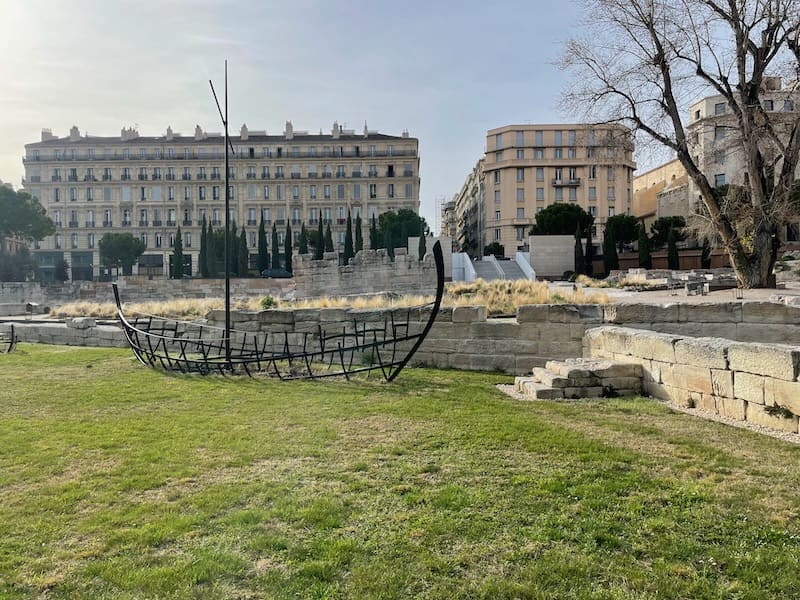
Once you’re inside, the centuries begin to unfurl, 13 distinct chronological eras that take us from the Greeks through to today. There are plenty of interactive exhibits, some in English, but you’ll probably understand most of what you’re seeing even if the English is missing.
From Antiquity through the Renaissance, the plague, the Revolution – it’s all here.
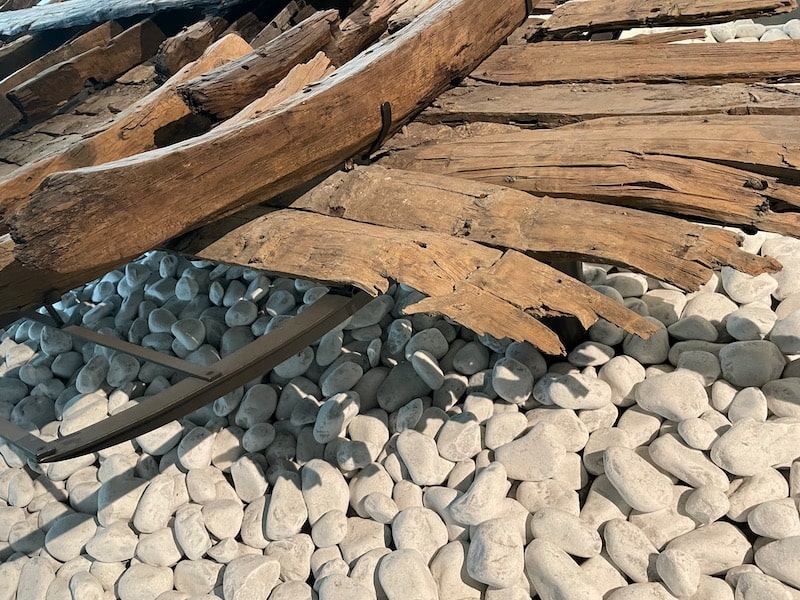
What to watch for:
Seven Greek and Roman wrecks were uncovered during roadworks in Marseille – five of these are on display in the museum and reveal building techniques used for these fishing vessels so long ago.
🏛️ 🏛️ 🏛️ 🏛️
2. Mucem - Museum of Civilizations of Europe and the Mediterranean
The MUCEM is something completely different, and it’s credited with having changed the face of Marseille when it opened in 2013, the year Marseille was chosen as European City of Culture. It focuses on the Mediterranean as a whole, a fascinating region with as many similarities as differences.
The museum is officially divided into three sections: the J4 Esplanade building, built on the harbor by two renowned local architects, Rudy Ricciotti and Rolland Carta, and which houses the permanent and temporary exhibitions; the 12th-century Fort Saint-Jean, which acts as a gateway to the old harbor and is linked to J4 by a stunning aerial footbridge; and a conservation area and resource center in another part of town. Take the time to wander along the maze of pathways and through the gardens for some outstanding views.
The rotating exhibits are always fascinating, and deal with some facet of life around the Mediterranean. During my visit, temporary exhibits looked at communications and food, fascinating topics both.
Visually, its most striking feature is the exterior, a giant cube of concrete filigree reminiscent of a mashrabiya, an Arabian screen. Inside, the design is wavy, a rejection in a way of the solid, geometric exterior.
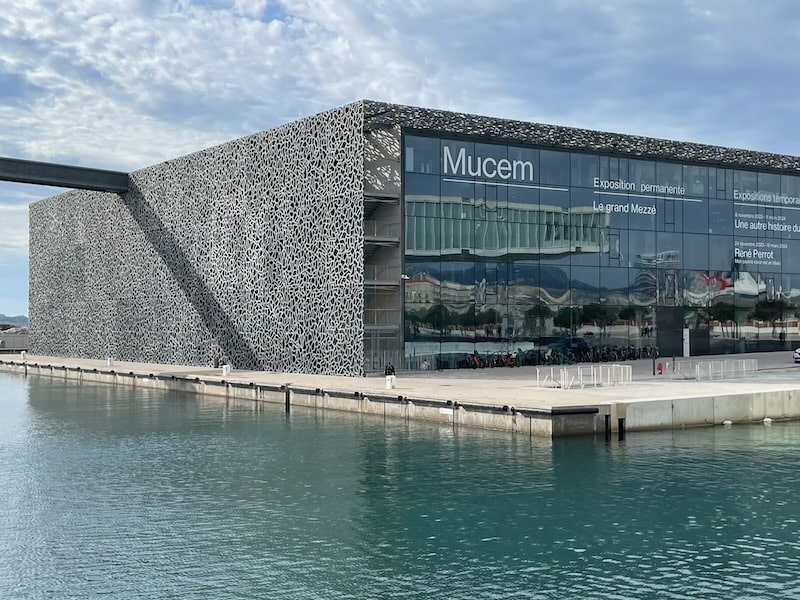
What to watch for:
The views from the outside. At one end of the esplanade sits La Major, guarding the entrance to the Panier neighborhood, not at all part of the museum but close enough to drop by.
At the other is the aerial walkway, where you’ll get one of Marseille’s most extraordinary views.
🏛️ 🏛️ 🏛️ 🏛️
3. Musée des Beaux-Arts
I visited this museum on a mission: to see the monumental paintings of the plague of Marseille, by Michel Serré. If you recall, Marseille and the rest of Provence were hit by the plague in 1720, and the most striking art depicting an event that killed at least 100,000 people is right here, in this museum.
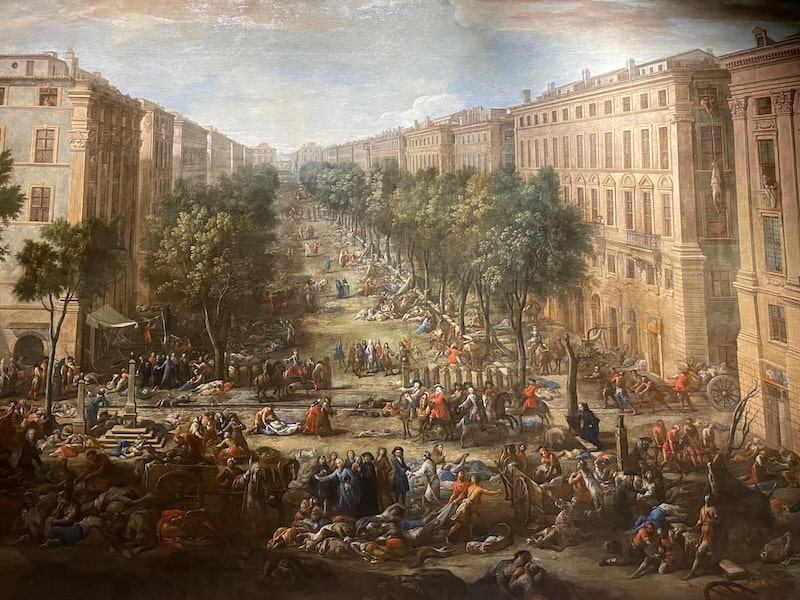
There’s plenty more to see, of course, European Renaissance art, along with a collection by Pierre Puget, the locally born 17th-century baroque artist and architecture.
This museum, like the Mucem, is at least as impressive outside as it is inside. The “gateway”, with its fountains and statues, was designed by architect Henri-Jacques Esperandieu, who also designed the Notre-Dame de la Garde Basilica on the hill.
Longchamp was built to celebrate the arrival of clean water in Marseille. A plan to build a canal from the Durance river to Marseille had been around for several centuries but it took a cholera epidemic in 1835 to finally make the project a reality. It was inaugurated in 1869, when Napoleon III was still emperor.
Right next door, also part of the Palais Longchamp, is the Natural History Museum, the oldest museum in Marseille.
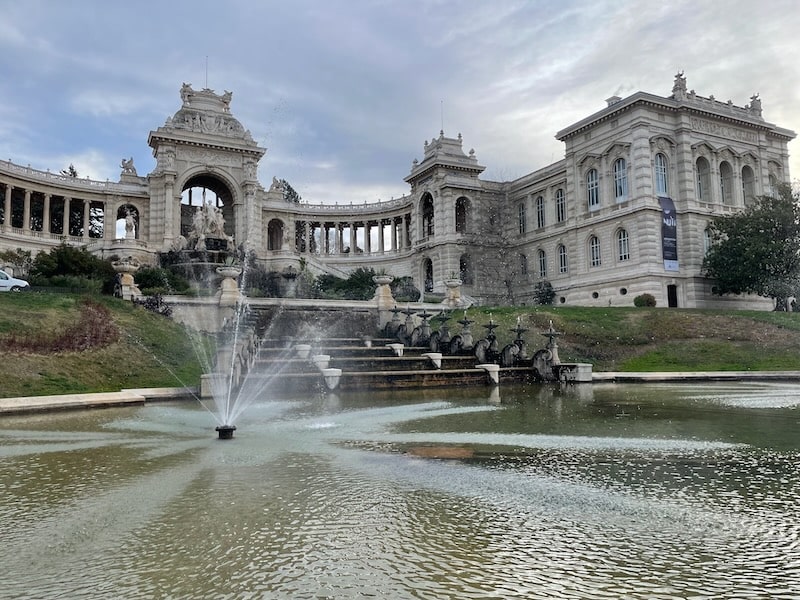
What to watch for:
Behind the palais is a delightful park that once housed the now-defunct Marseille Zoo. It is filled with joggers and walkers and in the morning, before the heat sets in, you can see groups practising Tai-chi in the shade.
My favorite garden moment was when I spotted a spectacular Wallace fountain behind the Palais – one of the eight in Marseille. Designed in the 19th century to provide needy Parisians with clean water, they are made of cast iron, usually painted bottle green, and decorated with four caryatids representing the virtues of kindness, simplicity, charity and sobriety. The fountain in Longchamp Park comes with a difference: the caryatids are painted gold.
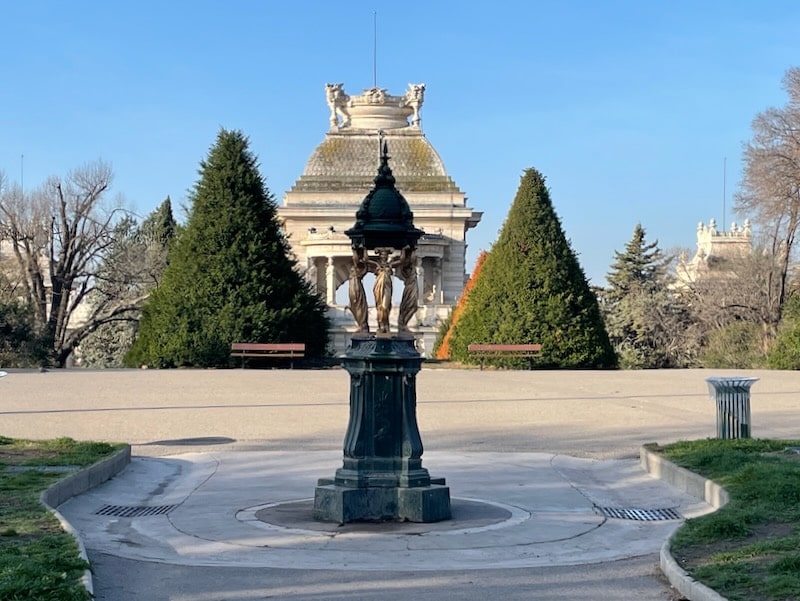
🏛️ 🏛️ 🏛️ 🏛️
4. Centre de la Vieille Charité
This building houses two distinct museums.
On the ground floor is the Musée d’Archéologie Mediterranéenne, which houses the most important collection of Egyptian antiquities after the Louvre. Initially specialized in Egypt, the museum has expanded and now includes items from the Middle East and the rest of North Africa.
Above it is the Musée d'Arts Africains, Océaniens, Amérindiens (MAAOA), the only museum in France other than the Quai Branly in Paris dedicated to non-European art from around the world.
The Salle Afrique, or Africa Room, has a striking collection of masks, whose every rictus jumps out from the darkness like so many faces frozen in time. The Salle Océanie-Amériques, or Oceania and Americas Rooom, contains a collection of painted or otherwise decorated human skulls, along with an exceptional selection of objects from Vanuatu and headdresses from North American native cultures. Finally, the Salle Mexique, or Mexico Room, has nearly 3000 items including masks and Huichol yarn paintings, which I love.
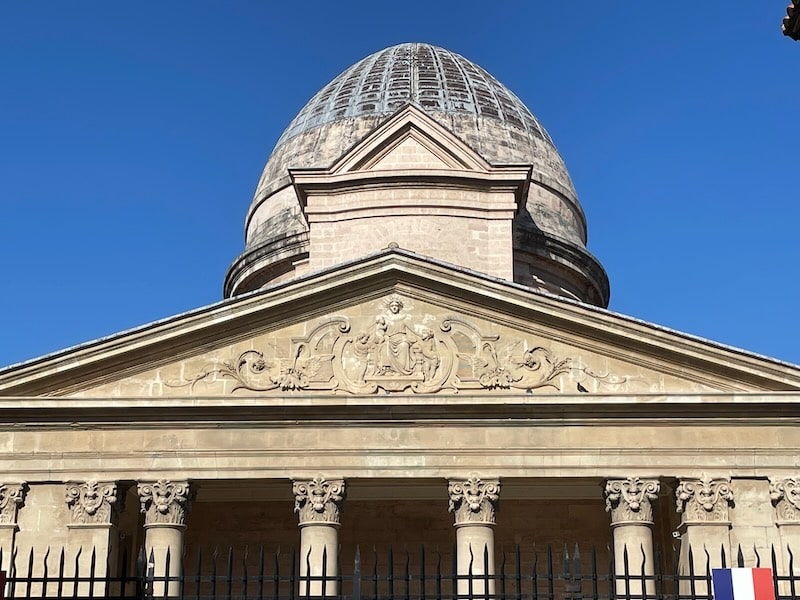
What to watch for:
The building itself, the Vielle Charité, was once a hospice for the poor or homeless. Designed by local architect Pierre Puget in the late 17th century, it was eventually abandoned and fell into disrepair. Famed architect Le Corbusier, who created La Cité Radieuse across town, visited the Charité in the early 1900s and noting its state, called on the city to do something about it. Today, it is a national monument.
Find out more here (site in French).
🏛️ 🏛️ 🏛️ 🏛️
5. Cosquer Méditerranée
This final entry is a very different type of museum: rather than an exhibit of objects, it is a replica of painted art from the paleolithic, an ideal visit for the entire family.
In 1985, master diver Henri Cosquer was enjoying the Calanques near Cassis when he discovered the entrance to an underwater tunnel that would eventually lead to a fabulous decorated cave. Armed with a roll of cord, he unfurled it as he swam along, his only lifeline to the world above. Lose the rope and he could lose his life, and three divers would eventually lose theirs in their effort to explore the tunnel.
Finally, Cosquer began to swim upward until he broke free of the water into a grotto the likes of which he had never seen before – undoubtedly the first man to enter the grotto in 20,000 years.
He faced a world of wonder, swimming past pillars and columns, gazing with his headlamp at coal drawings of horses, and even penguins, more than 230 animal drawings in all, along with handprints scattered throughout.
With water levels rising, the drawings would soon be endangered and a decision was made to build a replica, keeping this amazing art for posterity, a bit like the caves at Lascaux. The oldest images date back 33,000 years!
You ride through the replica in pods on rails, six people in each, and witness exactly what Cosquer first saw in the cave, the paleolithic evolving like a movie before his eyes. As these long-ago drawings capture your imagination, you’ll forget this is a facsimile and believe this is the real thing.
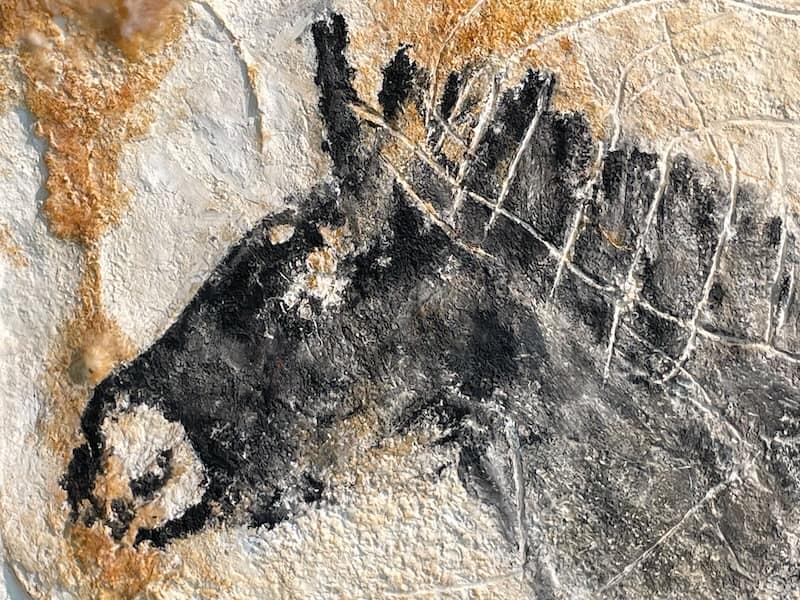
What to watch for:
The entrance and hallways through which you access the elevator are all built on a bed of water, so don’t be surprised if the earth moves. It does.
After the tour, you can head upstairs to see how skilful taxidermists have preserved paleolithic species now extinct.
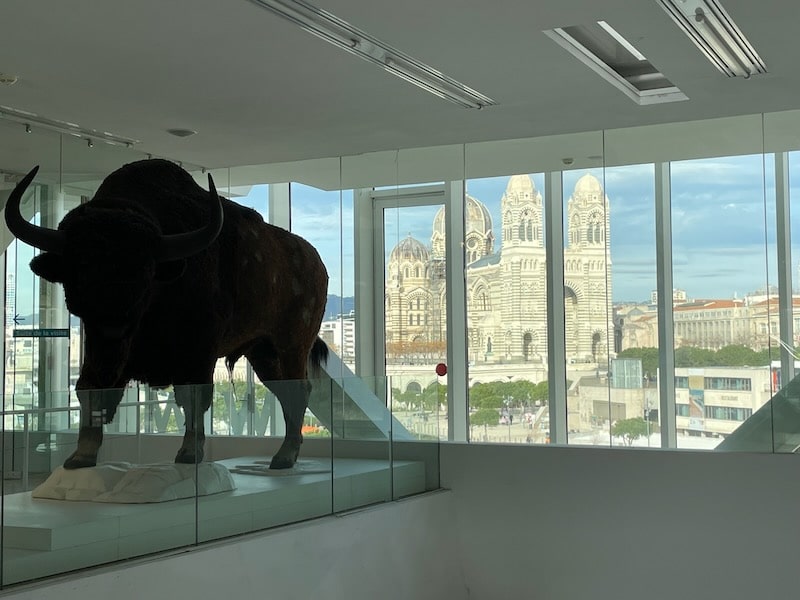
Other popular Marseille museums
I’ve chosen the top 5 above because they speak the most to me, but depending on your tastes you may well like these below even better. All I can say is that I haven’t been disappointed by any museum in Marseille - my only disappointment is with closures, which happen periodically when exhibits are being switched, which is why you need to make sure the museum is open before you plan to go.
If you want more Marseille museums to enjoy…
- Musée Cantini: Eary 20th century art.
- Musée des Docks Romains: Archaeological remains of ancient Roman docks.
- Château Borely: Grand 19th-century mansion with decorative arts & fashion exhibits.
- Mémorial de la Marseillaise: Dedicated to the French national anthem and the French Revolution.
- Friche la Belle de Mai: Former tobacco factory turned cultural and community complex.
- Musée Grobet-Labadie: 17th-19th century decorative arts.
- Musée du Savon de Marseille: Tiny museum dedicated to Marseille soap.
- Musée Notre Dame de la Garde: The Basilica’s museum, tracing her history.
- Deportation monument: Personal stories of deportees during World War II.
- Chateau d’If: Monte Cristo prison, off the coast of Marseille.
The Tourist Office website has a full listing of Marseille museums.
Before you go…
Visiting museums in Marseille is a wonderful way to understand the city, its history and its culture, but there are plenty of other things to do in Marseille!

